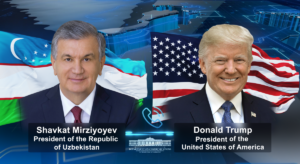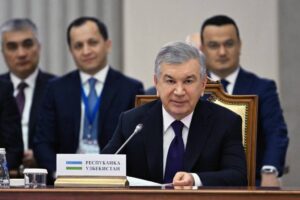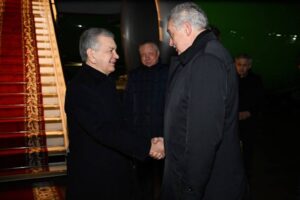President of Uzbekistan Briefed on Reform Achievements and New Development Plans in Samarkand Region

Tashkent, The Gulf Observer: President of Uzbekistan was presented with a comprehensive report on the results of socio-economic reforms and future development plans for the Samarkand region, one of the country’s largest and fastest-growing regions in terms of population.
Given the demographic growth, the demand for housing, infrastructure, education, employment, and healthcare has risen significantly. Over the past eight years, 1,132 multi-storey apartment buildings have been constructed in Samarkand, improving the living conditions of 56,000 families. Notably, the coverage rate for preschool education has increased from 21% to 73%, while access to higher education has grown from 10% to 45%.
The region’s economy has seen robust expansion in key sectors such as textiles, metallurgy, electrical engineering, building materials production, and tourism. The implementation of large-scale investment projects and the creation of high-income jobs have contributed to greater public confidence in the region’s future.
The poverty rate in Samarkand region has declined from 7.5% to 6.9% since the beginning of the year. Plans are underway to create 150,000 new jobs and lift 90,000 citizens out of poverty by the end of 2025. Over the past eight years, industrial output in the region has grown 1.7 times, reaching over 45 trillion Uzbek soums. However, the concentration of industrial production remains uneven, with 37% located in the city of Samarkand and 23% in the Jomboy, Samarkand, and Urgut districts, while districts such as Kushrabad, Payaryk, and Nurabad lag behind in industrial development.
To address these disparities and promote balanced regional growth, a reform headquarters has been established in the Samarkand region at the initiative of the President. During the briefing, officials presented new investment proposals developed in cooperation with local entrepreneurs.
Key among these is the proposed establishment of a special industrial zone on 115 hectares in Nurabad district. The zone is expected to attract $472 million in investments and create 1,200 new jobs. In Kushrabad district, a Chinese investor plans to invest $40 million in granite stone extraction and processing. Meanwhile, in Bulungur district, an entrepreneur has launched an in vitro laboratory aimed at developing a domestic seed potato brand, alongside plans to construct a $100 million biopharmaceutical enterprise.
Overall, 14 new investment projects worth a total of $1.2 billion have been identified for the region. These projects are projected to create 12,000 new jobs and generate export revenues amounting to $82 million.
President of Uzbekistan expressed strong support for the proposed initiatives and issued directives for their swift and effective implementation. He emphasized the importance of ensuring balanced development across all cities and districts of the Samarkand region, with a focus on enhancing investment appeal and export potential uniformly.


